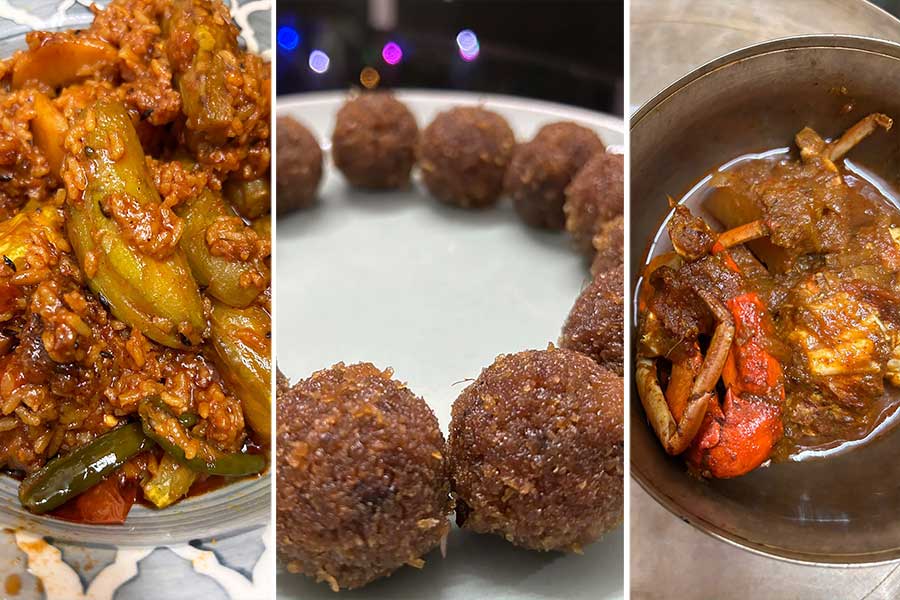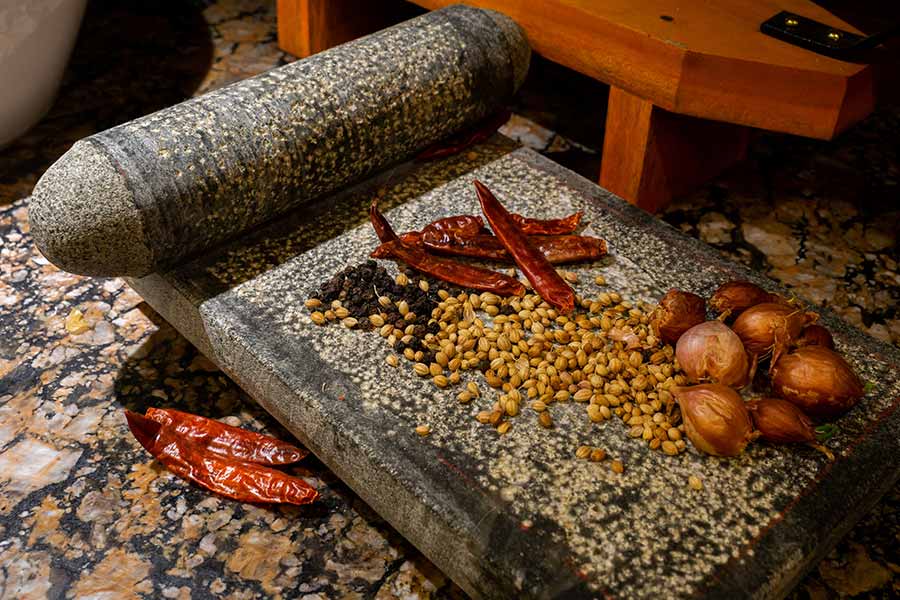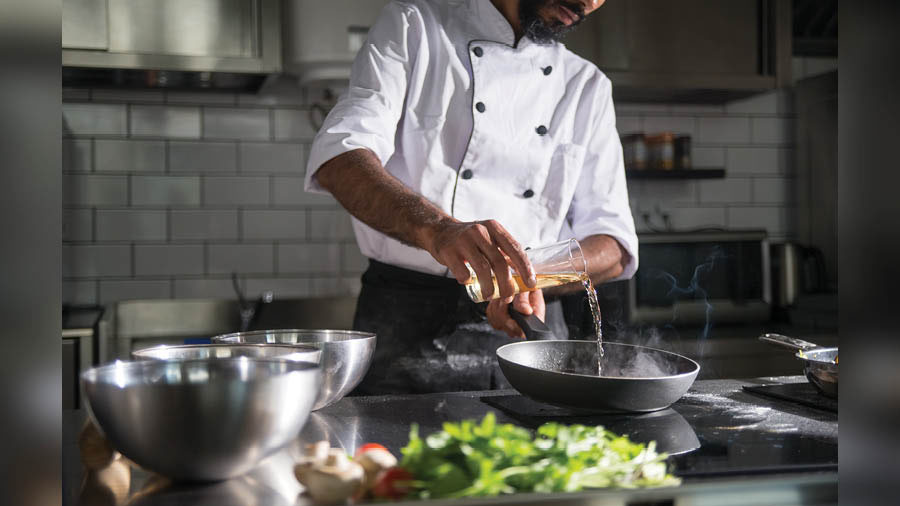“What do you want to have for lunch?” Dida would ask every time I visited her. The disciplinarian did not dole out endearments — shona, babu — very often, but her love was reflected in her food. I would always ask for a sabji diye dal and kada alu bhaja — a dal with seasonal vegetables and a drizzle of ghee, and potatoes fried in mustard oil with nigella seeds and green chillies. Looking back, I realise that perhaps my love for food started with my Dida, from whose kitchen I ate aplenty, but missed out on learning hands-on from her.
Tracing the roots
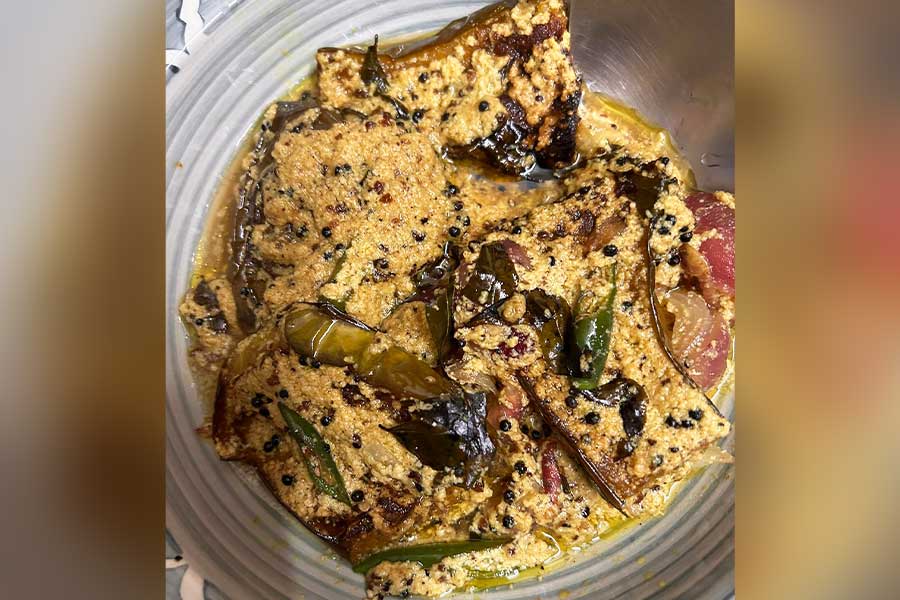
Doi Begun — a recipe from my husband, an avid culinary enthusiast
Whenever I make regular Bengali recipes like maachher jhol or thorer boti, I invariably think of Dida, going back to the kitchen of our home in Raghunathganj in Murshidabad. Perhaps, it was this yearning in my heart that made me take up a pet project this year — documenting the recipes of my family. I wanted to put together heirloom recipes from my mother’s family, my father’s family and my husband’s family. What I have uncovered and continue to uncover is a treasure trove of nostalgia that has led to understanding the culinary heritage of my families where women with Bangal and Ghoti roots have helmed the kitchens.
The idea came to me quite abruptly, after the loss of four grandparents. Now, my husband and I only have one surviving grandparent — my husband’s paternal grandmother, my didi shashuri, whom we fondly call Amma. Perhaps influenced by reading Nietzsche and Sartre, I would ruminate on how effervescent yet fragile life can be, which led to mulling about documenting the little things that usually go unnoticed — along with the recipes. Like having tea with my mother-in-law while discussing dishes made by her Ma that she loved to eat when she was little. Through the process of photographing my family and making notes about our culinary heritage, I want to create documented history for me and my husband, and for our next generation.
Rome was not built in a day

The ultimate ‘Bangali’ comfort food — piping hot rice and mutton kosha, made with a recipe by my mother
The first step of my enterprise was to chalk out a plan of action. The second was a flowchart — I could have skipped this, but I also want to document our genealogy. Then came identifying members of the family who would cook, and then interviewing almost every family member.
The next step — where I thrive — was an excel sheet segregating popular, forgotten and hidden recipes. Hidden recipes are the ones that were not passed down or made often because my Dida or Ma, who got married into predominantly Ghoti households found certain quintessentially Bangal fish preparations — shutki, shol or bowal — were not as welcome in their new households.
The last step is several and repeated conversations with every member of the family, and noting down the recipes to create a treasure trove of heirlooms. I know this will be an evolving process that involves dedication and effort, since those in the family who have this wealth of information are elderly and I will have to travel to them. Yet, they have all been willing to take this voyage to the past with me.
A trip down memory lane
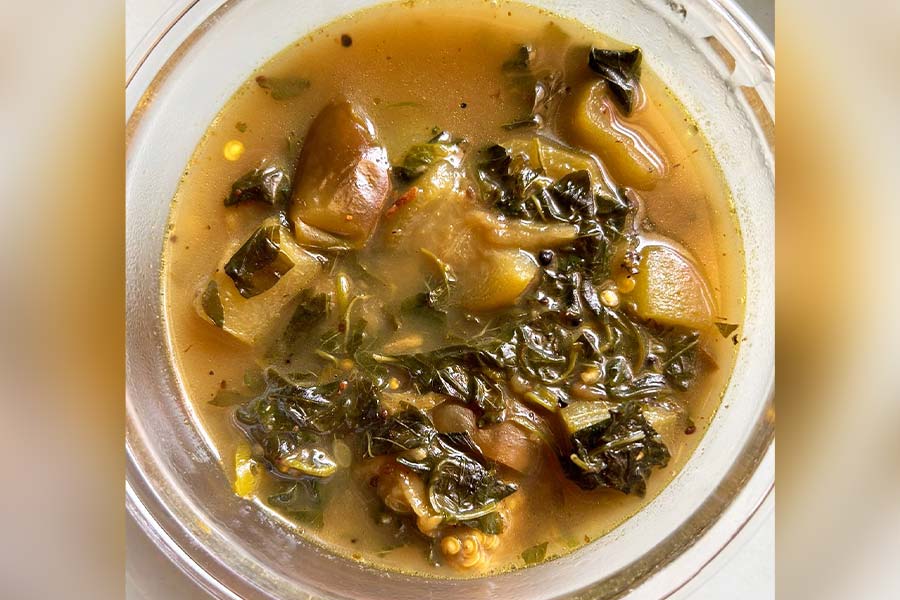
Notey shaaker jhol for a Monday lunch, a recipe by my mother-in-law
So far, the most fascinating part of the process has been unearthing facts about family members I never met. For instance, I never met my mother’s maternal grandmother who lived with them and, according to my mother, used to make the most delicious phalahar or sabu makha.
This experience has been peppered with interesting big and small revelations. For instance, one Sunday my husband brought back some notey shaak (green amaranth) from his morning market visit. This particular shaak is widely made in in Bengali households — used in shukto with brinjal and ridge gourd, finely chopped and stir fired — but this time my husband remembered how his Boroma (his father’s grandma) would often bring home kanta notey, a wild variety of notey shaak. What resulted was spending some quality time together in the evening, separating the leaves and the stems of the notey shaak, while talking about Boroma’s cooking.
Lessons in diversity
Another insightful lesson through this whole experience has been realising how the kitchen was where the Ghoti and Bangal roots along with many other lived experiences came together, and how expertly the women of my family have honed their culinary prowess.
My mother learned to cook from her mother-in-law — my Didi — whose culinary repertoire was a curious mix of Bengali styles of cooking. From chingrir jholgola — a light prawn stew with finely sliced potatoes and onions, flavoured with nigella seeds and turmeric — to sweet treats like biscuits, rosogolla, narkel naru and kamalabhog that she made during Vijaya Dashami.

Another Bengali favourite — ‘phulko’ luchi and my mother’s recipe of kumro-alu-chholar torkari
This documentation of my culinary heritage is incomplete without my mother who taught me how to cook and fall in love with it too. Adar chutney, shingi maachher jhol, maachher kochuri, niramish jhol, kumror torkari or kosha mangsho — her playfulness with ingredients and command over the craft amazes me every single day.
When it comes to cooking, precision in chopping ingredients and making the right spice paste is of prime importance, something that my mother-in-law and my aunty, Mejo mashi, show remarkable prowess. They can prep and chop mocha (banana flower) or thor (banana stem) with the finesse of a machine, or paste poppy seeds or mustard like chandan.
Married into a Bangal family, I love how my mother-in-law makes niramish enchorer dalna, a jackfruit curry without onion and garlic, that can put kosha manghso to shame. Her panch torkari — a mixed vegetable with lentil fritters or bori is another favourite. My pishi shashuri, my husband’s aunt, makes such a delicious chutney with cabbage or cauliflower leaves that I can finish off a plate of rice with just that.
The process might be time consuming, but this journey has been one of discoveries through conversation and observation — from Boroma’s kanta notey to little things like how potatoes are chopped differently for chochori and dalna and how much water must be splashed or sprinkled to make the fine paste on a sil nora.
Rabindranath Tagore wrote ‘...hariye giyeche tomar akhorguli…’ in 1926, and some 98 years later, a woman in her mid-30s is trying to put together some forgotten, some ignored and some everyday pieces of her family’s history, through food.
